In this article, I'm going to be sharing some principles and trends that excite me as a Product Manager. I'm going to cover:
- being design-driven
- low-code
- headless and JAMSTACK technology architectures
- business philosophy
If you enjoy the read give it share by clicking the social icons on the left if you're on desktop, or the social icons at the bottom of the page if you're on mobile. And stick around till the end where I leave you with 1 interesting question you can answer and tag me on LinkedIn to continue the conversation!
Being design-driven

Being design-driven excites me. We're always striving to be more design-driven at makerfox. When forming this company we intentionally took the time to understand each other's personalities, strengths, weaknesses, desires, and fears. In fact, we have a central wiki where all information lives from personality, finances, strategy, management, and marketing. We don’t only leave communication to writing. We believe well-designed problems, solutions, and teams are visual.
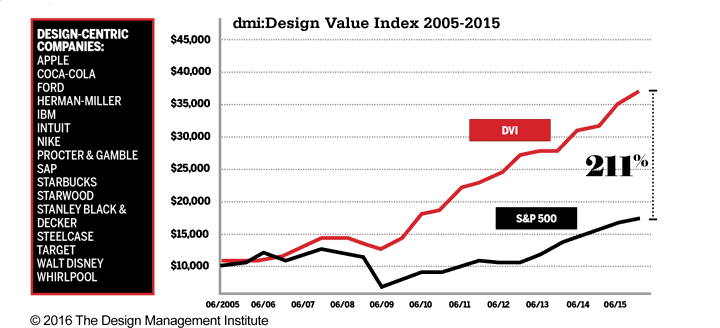
Fun fact: did you know design-driven businesses outperform other businesses? Here are 2 indexes that showcase this observation:
Design is in the details, it's how it works. Here's a toolkit by Google that I keep close to me at all times: that enables me to accomplish this.
As you can see from that toolkit, it's a series of group exercises. Collaboration is key to developing great designs. Everyone is a designer. It takes different and diverse perspectives collaborating to empathize and create great products. This is why design must be visual.

We've been communicating visually since the Stone Age. It allows diverse perspectives and backgrounds to be included in the design process communicating in one common language. This is important because communicating with tangibles is always more useful than communicating with only words or over conversation. This one principle can change how you manage your team meetings!
As you'll read on when I talk about low-code and headless architecture, technology organizations are getting more productive and more accessible to more contributors at a high level. When everyone and anyone, can build anything, it introduces new challenges that great design solves: what should you really be building, how should you do it, and why?
Low-code
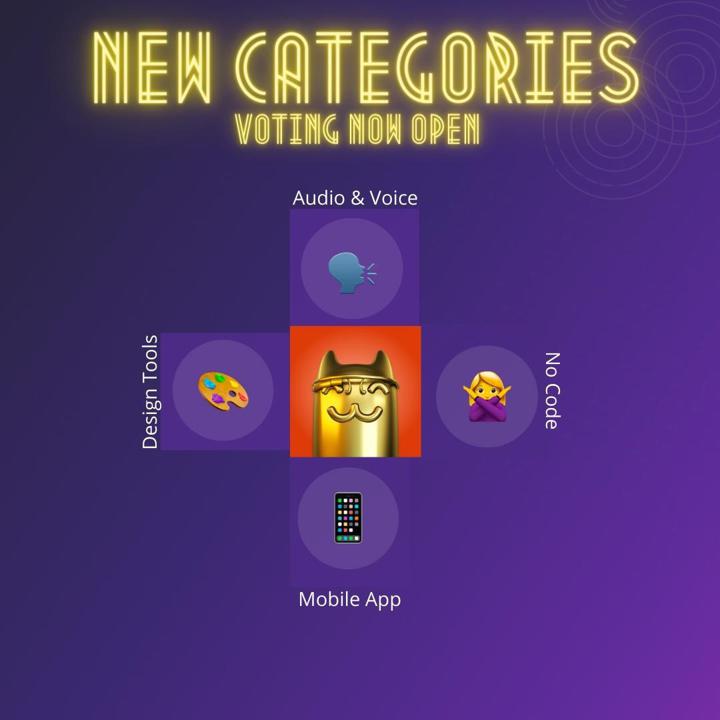
Last year in 2020, no-code was exploding. You can see this on this explodingtopics.com report. As you can see though, looking back, that growth wasn't really explosive relative to a more long-term snapshot. That's not stopping no-code features from being the core value proposition of new products. Check out the 2020 No Code Golden Kitty Awards by producthunt.com.
Just like the graph I shared above, no-code is really relative. That's because it's binary, it's either code or no-code. What's no-code today can be totally different from what's possible to be no-code tomorrow.
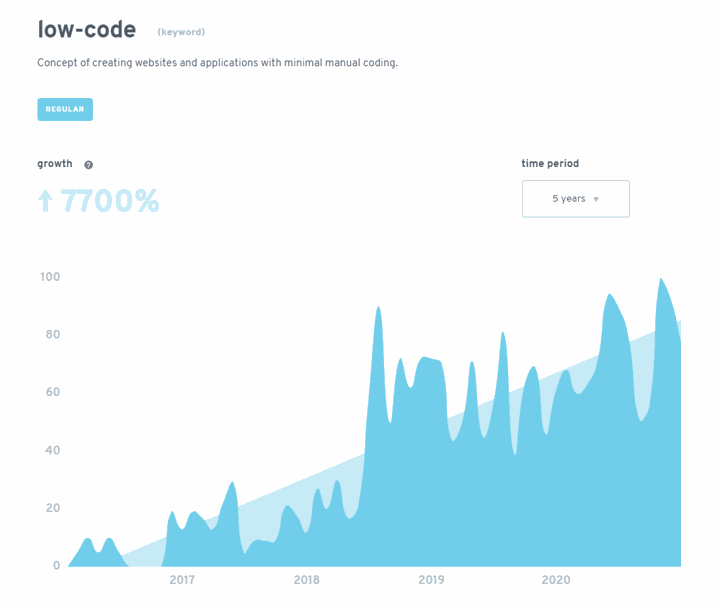
I've ways been more interested in low-code. The growth trend here wasn't as explosive as no-code last year, but looking back now, the long-term trend is much more clear. Check out the explodingtopics.com report for yourself. That's because low-code is really no compromise. Code is still part of the process, there's just less of it. Perhaps less-code is a better keyword for this concept.
Low code ultimately increases developer productivity without sacrifices to what developers care about: flexibility, resilience, performance, and security. In fact, we're intentionally investing in low code over no-code at makerfox. We're developing services with these capabilities because it ultimately allows us to accomplish business outcomes that our customers care about ー adaptability and agility.
Headless and JAMSTACK Technology Architectures
I'm getting a bit technical here, but these concepts are incredibly important for the future of internet software and major internet software applications like e-commerce. The pandemic has permanently accelerated the adoption of e-commerce in our economy. Here's the report from the United Nations that helps illustrate this opportunity.
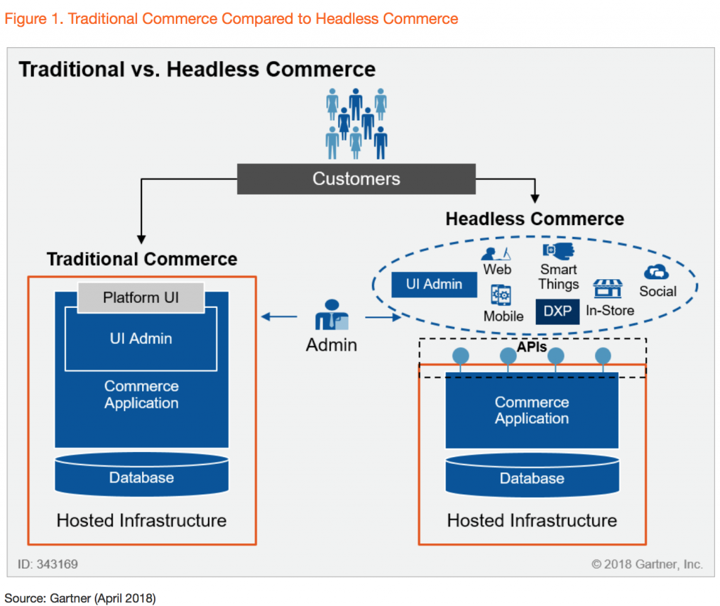
Headless architecture is really a throwback to service-oriented architecture applied to the web that fits nicely into how software engineering teams build content and functionality on the web ー by being API-first by design. Where the APIs provide the functionality, and the headless components deliver the content. I first learned about this concept in my traditional education as well as the important software book by Uncle Bob called Clean Architecture. I do feel like in recent times this book was applied much too tactically, it's the concepts that are important to software systems as a whole over the web, versus how you should architect all software projects in my opinion.
Headless means that the developers have control over the code of the front-end and the code of back-end and other software services can integrate nicely into the tech stack allowing for more developer control, and better cross-collaboration with non-technical folks while still interfacing with technologies built by developers. It allows content and functionality to be developed side-by-side without depending on each other.
JAMSTACK is a specific and opinionated architecture of how applications should be built on the web. The J stands for JavaScript, and with JavaScript and TypeScript being one of the most used and loved programming languages in the world as well as being the most used language year after year on Github repositories, it's a good idea to keep an eye on this ecosystem.
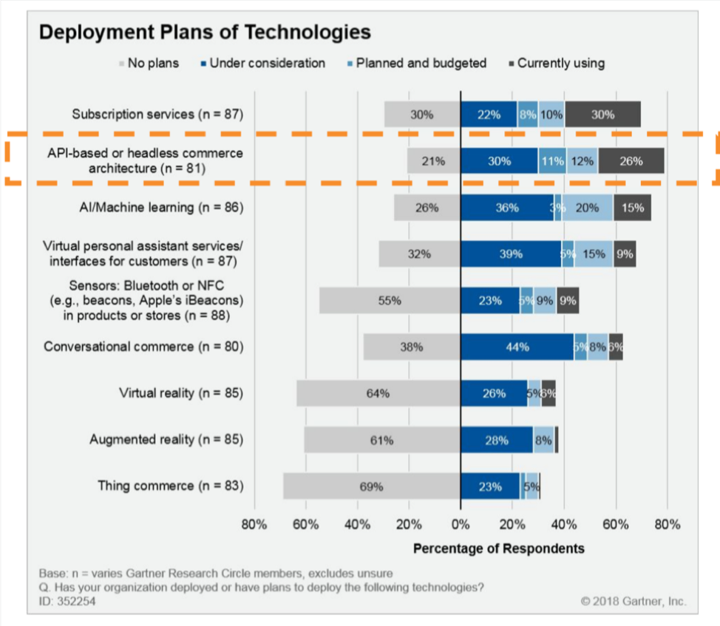
Headless and JAMSTACK are very important web architectural concepts that ultimately allow developers, designers, marketers, and managers to deliver better digital experiences to customers.
Business Philosophy
Businesses are playing a huge role in transforming our society. The pandemic has really accelerated this and made it much more clear to the world. Combine that with recent privacy and anti-competitive issues that Facebook, Google, and Amazon are under scrutiny by our governments and democracy, businesses are transforming our society.
Bringing it back to the fundamentals, important businesses that are in a position to drive change are operating in a set of rules that simply don't make sense to transform society. For example, why are forward-looking statement disclosures in SEC reports such a debate? And why did it take the pandemic for the SEC to urge public companies to disclose their forward-looking statements? Don’t investors want to invest in skepticism, to invest in challenging the status quo?
To build the future, we need to talk about it.
In fact, it is the companies with the massive transformative purposes that build the most valuable and sustainable businesses. Take Google for example, how grandiose is their mission statement?
"Our mission is to organize the world’s information and make it universally accessible and useful." - Google
We're so focused on the past performance of a business it clouds what's most important: how are we going to use business to bend the future to positively impact our society.
Public businesses are so focused on financial growth and financial returns to their investors above all else. Businesses are continuously rated on their profitability. Is this capitalism? Adam Smith, renowned economist, philosopher, and father of modern economics, said:
Consumption is the sole end and purpose of all production; and the interest of the producer ought to be attended to, only so far as it may be necessary for promoting that of the consumer. - Adam Smith, The Wealth Of Nations, Book II, Chapter II, p.329, para. 106.
Adam Smith is talking about customer centricity above all else. Where Nobel Prize winner and renowned economist Milton Friedman ingrained in our business philosophy his doctrine:
A company has no social responsibility to the public or society; its only responsibility is to its shareholders.
This means shareholder supremacy or interests above all else. I think we're losing sight of how to make capitalism serve our economy and society.
I'm more curious about how Jeff Bezos, former CEO of Amazon was able to convince their investors to invest all capital gains into continuing to build the future. How has he convinced his shareholders it's in their best interest to continue to invest every penny of profit into building the future?
"Friends congratulate me after a quarterly-earnings announcement and say, 'Good job, great quarter,'" Bezos said to Forbes. "And I'll say, 'Thank you, but that quarter was baked three years ago.' I'm working on a quarter that'll happen in 2021 right now." - Business Insider, 2018
What happens when more businesses operate with the focus on bending the future to their vision? What happens when businesses stop focusing on copying each other to compete for profits in the short term? And at what cost?
Since we're on the topic of philosophy, I want to leave you with 1 final thought. A famous interview question was posed by one of the most important investors of our time: Peter Theil.
“What important truth do very few people agree with you on?” - Peter Theil
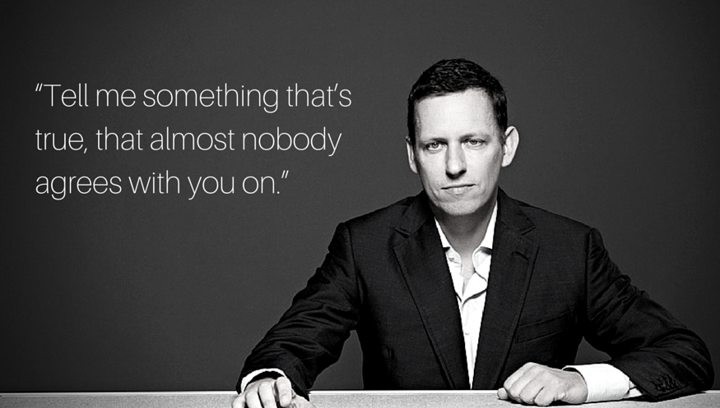
I invite you to answer this question and tag me on LinkedIn! Feel free to send me a DM so we can figure out the tagging situation if we aren't close enough in our networks.
